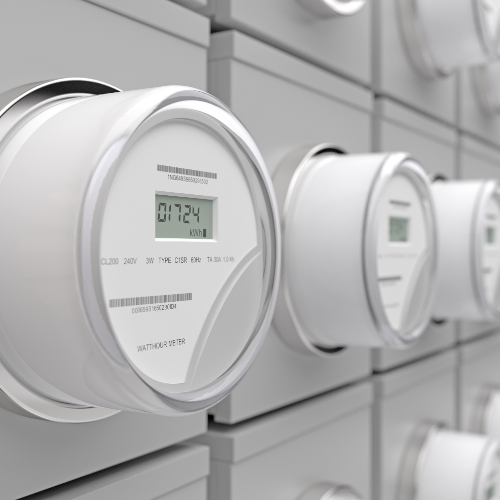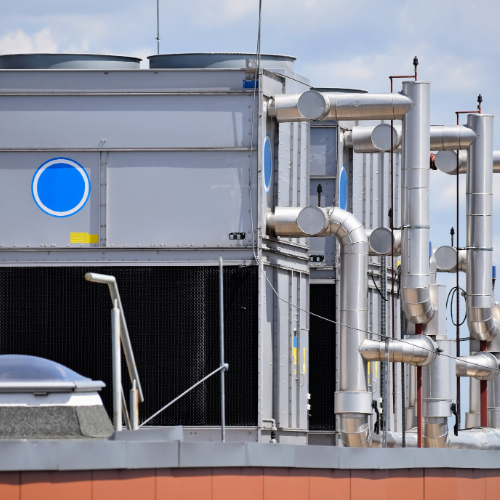SCOPE 2 EMISSIONS
Scope 2 emissions are the greenhouse gases released into the atmosphere from the consumption of purchased electricity, steam, heat and cooling by a company. This also includes the electricity to power electric vehicles owned by the company. Scope 2 emissions are called indirect emissions because the physical CO2e emissions resulting from an organisation’s activities occur at sources it doesn’t own or control. For example, a power station burns coal to create electricity, the electricity is transmitted to a factory or office and used there to power its computers, machines and lighting. Scope 1 emissions from one business form part of the scope 2 emissions for another business.
Scope 2 emissions are specified under the NGER legislation and must be reported.
Read More
Electricity
For most organisations, electricity is purchased from third party providers and delivered from the grid and is consumed, this is a Scope 2 emission.
Electricity used and lost by the power generator during manufacture, transmission and distribution (T&D losses) is accounted for in Scope 3.
On-site electricity generation is growing quickly. For example, solar panel installations. The type of electricity generation, solar or bigas etc. will determine how the greenhouse gas emissions (if any) are reported.
The carbon accounting for electric vehicles (EVs) usage in organisations is managed under Scope 2.
Purchased Steam, Heating and Cooling
Some organisations, mostly manufacturers can generate heat and steam as side products of their business. These businesses often sell the heat and steam to neighboring organisations who require these types of energy in their businesses.
Read Less




Scope 2 Emissions




Scope 2 emissions are the greenhouse gases released into the atmosphere from the consumption of purchased electricity, steam, heat and cooling by a company. This also includes the electricity to power electric vehicles owned by the company. Scope 2 emissions are called indirect emissions because the physical CO2e emissions resulting from an organisation’s activities occur at sources it doesn’t own or control. For example, a power station burns coal to create electricity, the electricity is transmitted to a factory or office and used there to power its computers, machines and lighting. Scope 1 emissions from one business form part of the scope 2 emissions for another business.
Scope 2 emissions are specified under the NGER legislation and must be reported.
Read More
Electricity
For most organisations, electricity is purchased from third party providers and delivered from the grid and is consumed, this is a Scope 2 emission.
Electricity used and lost by the power generator during manufacture, transmission and distribution (T&D losses) is accounted for in Scope 3.
On-site electricity generation is growing quickly. For example, solar panel installations. The type of electricity generation, solar or bigas etc. will determine how the greenhouse gas emissions (if any) are reported.
The carbon accounting for electric vehicles (EVs) usage in organisations is managed under Scope 2.
Purchased Steam, Heating and Cooling
Some organisations, mostly manufacturers can generate heat and steam as side products of their business. These businesses often sell the heat and steam to neighboring organisations who require these types of energy in their businesses.
Read Less
Scope 2 Emissions
Scope 2 emissions are the greenhouse gases released into the atmosphere from the consumption of purchased electricity, steam, heat and cooling by a company. This also includes the electricity to power electric vehicles owned by the company. Scope 2 emissions are called indirect emissions because the physical CO2e emissions resulting from an organisation’s activities occur at sources it doesn’t own or control. For example, a power station burns coal to create electricity, the electricity is transmitted to a factory or office and used there to power its computers, machines and lighting. Scope 1 emissions from one business form part of the scope 2 emissions for another business.
Scope 2 emissions are specified under the NGER legislation and must be reported.
Read More
Electricity
For most organisations, electricity is purchased from third party providers and delivered from the grid and is consumed, this is a Scope 2 emission.
Electricity used and lost by the power generator during manufacture, transmission and distribution (T&D losses) is accounted for in Scope 3.
On-site electricity generation is growing quickly. For example, solar panel installations. The type of electricity generation, solar or bigas etc. will determine how the greenhouse gas emissions (if any) are reported.
The carbon accounting for electric vehicles (EVs) usage in organisations is managed under Scope 2.
Purchased Steam, Heating and Cooling
Some organisations, mostly manufacturers can generate heat and steam as side products of their business. These businesses often sell the heat and steam to neighboring organisations who require these types of energy in their businesses.
Read Less







